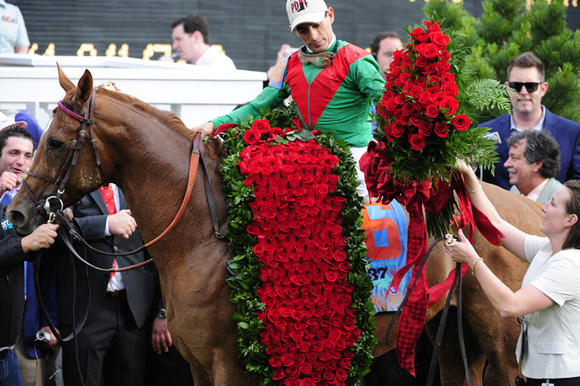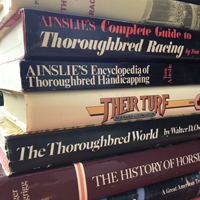
Audax Minor II
Real estate ads here in San Miguel love touting homes “with a magnificent view of the Parroquia.” That these “magnificent views” sometimes involve an acrobatic (possibly dangerous) leaning out a window with a pair of high-powered binoculars is not mentioned in the ad but that “view” is reflected in the $50,000 bump in the price of the house.
I am a man generally thought of by my friends as charming and amusing, but without any ethical standards whatsoever. That description may not be as quotable as Lord Byron’s famous “mad, bad and dangerous to know,” but the effect is much the same: “Gee I hope he can make it to our party, especially with his trophy wife, but I’m certainly not going to ask him to be our son’s godfather. I mean, the man buys DVDs from Juan totally guilt-free!”
Well, that’s me. Basically unencumbered by conscience; I acknowledge that.
But honestly I would draw the line at a real estate agent positioning my home as having “magnificent views of the Parroquia.”
That said, this New Year’s Eve, my invitable trophy wife and I went up to the roof of our home, and at midnight we saw the fireworks over the Parroquia.
Now that might not be good enough for a $50,000 bump, but I think $25,000 would be reasonable, don't you?
In years past we used to go to the chilango-jammed Jardin to join the fun. But now we usher in the New Year from, what I now think of as, our $25,000 view.
But just because we no longer make the Jardin scene doesn’t mean that we skip the Mexican Ball-Drop traditions. We still (attempt to) eat the twelve grapes with the twelve tolls of midnight:“Las doce uvas de la suerte.” I need all the luck I can get.

I learned about this custom here some twenty-plus years ago, and gamely I tried to comply. Have you? If you have, you know that it cannot be done. Rather than guaranteeing good luck for the coming year, the custom guarantees you’ll choke to death at some point during the first twelve seconds of the new year.
I now take a more cautious approach. I do eat the twelve grapes, but I spread them out over the first twelve minutes rather than twelve seconds. Anyway, my system must work because it’s brought me enough luck to have picked 5 of the last 10 Kentucky Derby winners.
I am strict about following that other Mexican New Year’s tradition; I eat a spoonful of cooked lentils at midnight. That’s supposed to bring good fortune. And I do bet on the Derby so maybe those lentils have been the real source of my 5 for 10.
For me, the real reason for observing the turning of the page to 2019 is that all of those
2-year-old colts, geldings and fillies of 2018, are – while I was eating my first grape – now officially 3-year-olds and eligible for this year’s Derby. That’s how it works in horseracing; every thoroughbred has his birthday on January 1st. Instead of singing “Auld Lang Syne,” the horses sing “Las Mananitas.”
Obviously this mass birthday isn’t based on actual birth dates; that would be too much of a coincidence. It’s a necessary convention, and if you think about it for a moment, you’ll understand the breeding implications:
Say you had a beautiful colt born on December 31st. The following day, your colt, still learning how to stand up, would be one year old. A New Year later, that colt would be only a year and a day old, but officially he would be a 2-year-old, and as such, eligible to race against other 2-year-olds. The problem is that those other 2-year-olds will actually be almost two. Basically twice your colt’s age.

Obviously no owner wants that. And so …
All racing thoroughbreds are born during the first four months of the new year. The gestation period for horses is eleven months, so the breeding season traditionally starts on February 15th. During the four months following that date, a top stallion will “cover” maybe 200 mares, often more than once. You do the math. As a horse handler at one of the top stud farms in Kentucky once told me, “There ain’t a whole lot of romance in all this.”
But while breeding has become romance-less and more science driven, there is still a lot of “art” involved. “Luck” might be another word for it. (There is surely a brisk business in grapes among breeders leading up to New Year’s Eve.) Only about one in every five hundred thoroughbred foals will ever win one of the better, and more valuable, “stakes” races. Even the top stallions in the world produce only a handful of stakes winners a year.
“Breed the best to the best, and hope for the best,” is the famous breeders’ motto.
From now until the Derby on the first Saturday in May all our eyes will be on the horses born during the first four months of 2016 – this year’s 3-year-olds. The top colts in this class will compete against each other in a series of stakes races that lead up to the Derby. Over the weeks ahead, we’ll be looking at the performances in these prep races closely. The ones that do the best in these races will earn the credentials that will give them one of the twenty coveted starting spots in “The Run for the Roses.” The Derby is often called this, because of the blanket of roses that goes over the winner after the race.
The race is also called “The Most Exciting Two Minutes in Sports”, because it is.
**************
 Audax Minor II is the pen name of a writer who divides each year between here in San Miguel, and a small town (pop. 400) in southern Ontario, Canada. Now retired, he travels to racetracks all over the world (four continents so far, hoping to add a fifth this year). He grew up in the Midwest of the United States and made his living as a writer for 35 years.
Audax Minor II is the pen name of a writer who divides each year between here in San Miguel, and a small town (pop. 400) in southern Ontario, Canada. Now retired, he travels to racetracks all over the world (four continents so far, hoping to add a fifth this year). He grew up in the Midwest of the United States and made his living as a writer for 35 years.
You must register and log in to write a comment.
Please use the "login" link at the top (right) of the page.
|